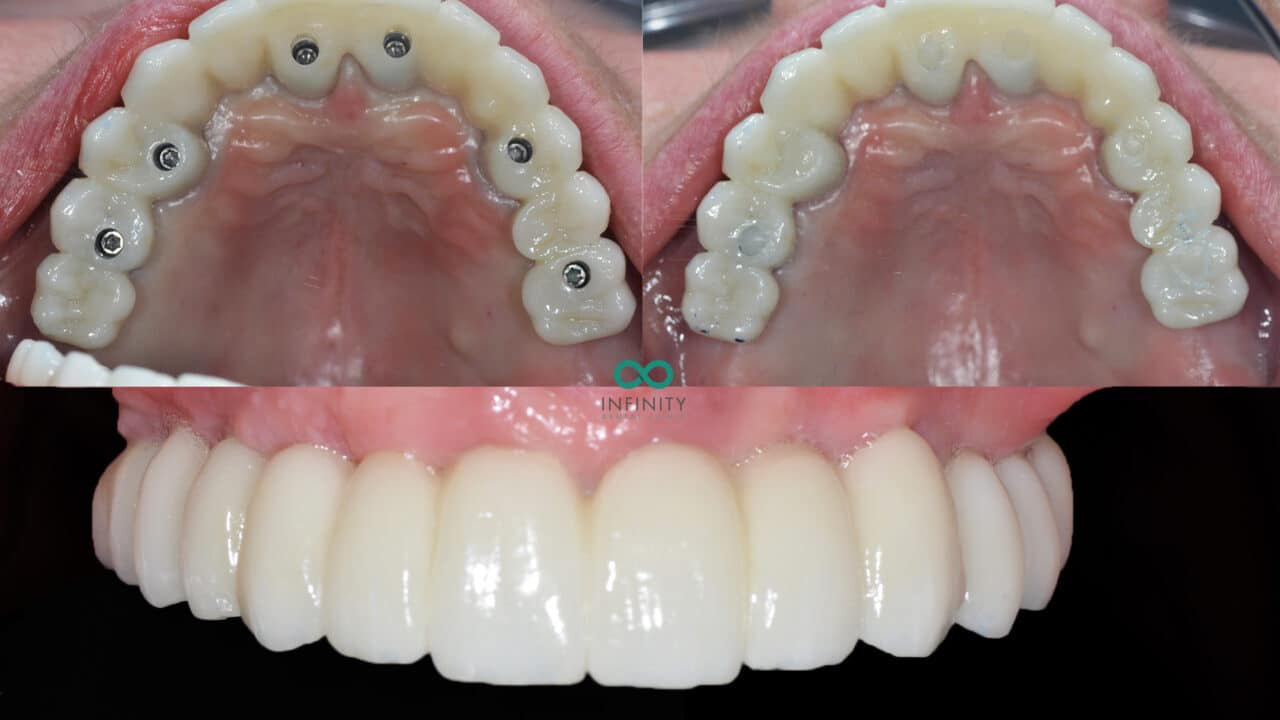What Does Dental Sense Do?
What Does Dental Sense Do?
Blog Article
Little Known Questions About Dental Sense.
Table of ContentsThe Best Guide To Dental SenseThe Ultimate Guide To Dental SenseThe Only Guide to Dental SenseTop Guidelines Of Dental Sense
are clinical gadgets surgically implanted right into the jaw to bring back an individual's ability to chew or their look. They offer assistance for artificial (fake) teeth, such as crowns, bridges, or dentures. When a tooth is lost as a result of injury or disease, an individual can experience problems such as fast bone loss, defective speech, or changes to chewing patterns that result in pain.Oral dental implant systems contain a dental implant body and oral implant abutment and may additionally consist of an abutment fixation screw. Professional teeth whitening. The oral implant body is surgically put in the jawbone in area of the tooth's origin. The dental implant joint is generally affixed to the dental implant body by the joint addiction screw and extends with gum tissues right into the mouth to sustain the connected man-made teeth
(https://profile.hatena.ne.jp/dentalsense1/)Framework of The Dental Implant System selecting oral implants, talk with your oral copyright regarding the possible benefits and risks, and whether you are a candidate for the treatment. Things to consider: Your general health and wellness is an important consider figuring out whether you are a great candidate for dental implants, for how long it will certainly take to recover, and how much time the dental implant might remain in location.
Smoking cigarettes may influence the healing process and decrease the long-lasting success of the dental implant. The recovery procedure for the dental implant body might take numerous months or longer, throughout which time you normally have a temporary joint instead of the tooth. the oral implant procedure: Carefully comply with the dental health guidelines provided to you by your oral service provider.
The Facts About Dental Sense Uncovered
Implant failing can lead to the demand for an additional procedure to repair or replace the implant system. Brings back the capacity to chew Brings back cosmetic appearance Helps maintain the jawbone from reducing because of bone loss Protects the health of the surrounding bone and gum tissues Helps maintain nearby (close-by) teeth secure Boosts lifestyle Damage to surrounding natural teeth throughout implant positioning Injury to the surrounding tissues throughout surgical treatment, such as sinus opening Injury during surgical procedure (for instance, crack of surrounding jawbone) Insufficient feature, such as seeming like the teeth do not attack together typically A sensation that the tooth hangs or twisting in location resulting from an abutment screw loosening up Implant body failure (looseness of the dental implant body) as a result of systemic infection, which might be more probable in clients with unchecked diabetes as a result of local infection in bone and gum tissues sustaining the dental implant body due to delayed recovery, which might be much more likely in patients that smoke Difficulty cleaning the gum tissues around the implant, causing bad oral health Neglected gum condition Post-surgical numbness because of nerve impingement or damage Always inform wellness care providers and imaging technicians that you have dental implants prior to any magnetic vibration imaging (MRI) or x-ray treatments.
FDA is not familiar with any kind of adverse occasions reported for MRI or x-ray procedures with oral implants. Oral implants systems are normally made from materials that adhere to worldwide agreement criteria of the International Organization for Standardization (ISO) or ASTM International. These standards have details of what makes a risk-free product.

A dental implant is a structure that changes a missing tooth. With screw-like gadgets, the specialist inserts a dental implant into the jawbone, and it works as a support for a synthetic tooth, called a crown. A tool called a joint attaches the artificial tooth to the oral implant. The crown is customized to fit the individual's mouth and match the color of their teeth.
The 10-Minute Rule for Dental Sense
Some individuals are not qualified for dental implant surgery. It is for dental doctors to operate people with: intense illnessuncontrollable metabolic diseasebone or soft tissue illness or infectionIf these issues are dealt with, a person can have the surgical procedure. In, oral doctors avoid from operating on individuals with: If people with any of the above go through oral implant surgical procedure, there is a greater risk of the implant stopping working.

Oral dental implant surgery is an individualized procedure. Offer you time to recover. Affix the blog post and final crown, bridge or denture.
Next off, your doctor will carefully put the dental implant into your jaw. Your surgeon will reposition his explanation your gums and close the cut with stitches. If your dental implant is near the front of your mouth, your dental practitioner will make a short-term tooth for you to use till you heal. In this way, you will not have a space in your smile while you recuperate.
Dental Sense Things To Know Before You Get This
Your company can tell you what to anticipate in your situation. During the recovery stage, your jawbone must fuse to the dental implant. This procedure, called osseointegration, is essential for security and long-lasting success. This procedure can take anywhere from three to nine months. Sometimes, it may take longer.
When your dental implant heals, your dental professional can attach the abutment (little port blog post) and your last restoration (crown, bridge or denture). This normally takes about one hour to finish and may need a 2nd minor surgical procedure. You shouldn't really feel any kind of pain throughout your oral implant procedure because your copyright will certainly use medication to numb your gums.
Report this page